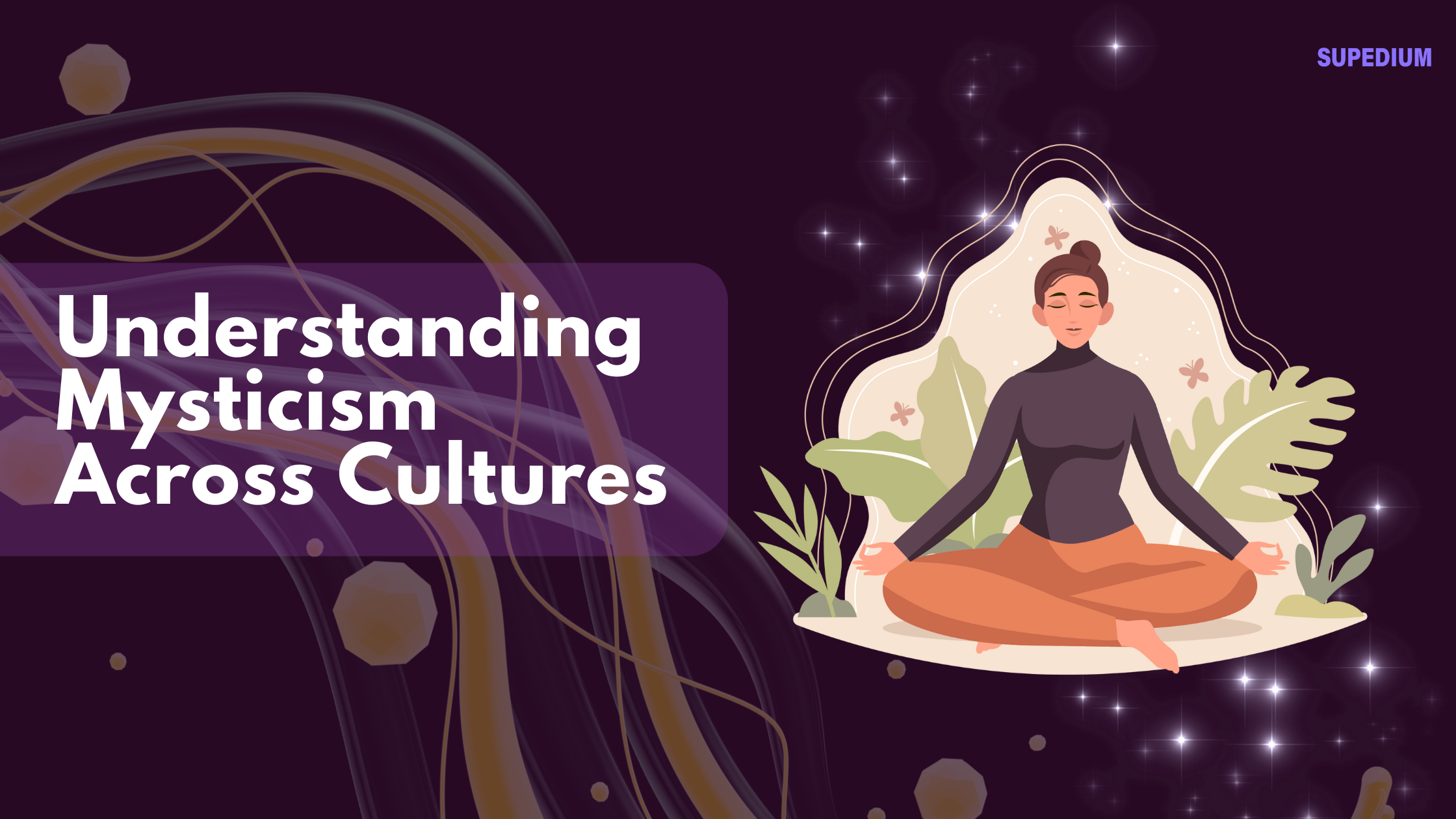Table of Contents
![]()
I. Introduction
Mysticism, at its core, refers to the pursuit of direct, personal experiences of the divine or ultimate reality, often characterized by profound states of consciousness and spiritual insight. Mystics across cultures have sought to understand and connect with a higher power or the essence of existence, transcending ordinary experiences and intellectual understanding. The study of mysticism offers valuable insights into human spirituality and the diverse ways in which different cultures approach the divine. This article aims to explore mysticism in various cultural contexts, highlighting both commonalities and differences across traditions.
II. Historical Overview of Mysticism
A. Early Mystical Traditions
Mystical practices have ancient origins, evident in early civilizations such as Egypt and Mesopotamia. Ancient Egyptian mysticism involved elaborate rituals and the worship of deities associated with the cosmos and the afterlife. In Mesopotamia, mystical elements were woven into religious rites aimed at connecting with the divine and ensuring prosperity.
B. Mysticism in Major World Religions
- HinduismHindu mysticism is deeply rooted in the Vedic and Upanishadic traditions. The concept of Brahman, the ultimate reality, and Atman, the individual soul, form the foundation of mystical thought. The Upanishads, ancient texts that explore these concepts, are central to understanding Hindu mysticism. Bhakti (devotional) and Yogic traditions further exemplify mystical practices, with figures like Ramakrishna and Vivekananda playing significant roles in popularizing these spiritual paths.
- BuddhismBuddhism introduces mysticism through the quest for Nirvana, a state of liberation from the cycle of rebirth and suffering. Theravada Buddhism emphasizes meditation and mindfulness as paths to enlightenment. In Mahayana and Vajrayana traditions, mystical practices become more elaborate, incorporating esoteric rituals and meditative techniques. Prominent figures such as the Dalai Lama and Thich Nhat Hanh have made significant contributions to modern Buddhist mysticism.
- JudaismJewish mysticism, particularly through Kabbalah, explores the nature of God and the universe. The Kabbalistic Tree of Life, a central symbol in Kabbalistic thought, represents the structure of divine emanations. Hasidic mysticism, with its focus on a personal relationship with God and ecstatic worship, further expands Jewish mystical practices. Key figures like Isaac Luria and Gershom Scholem have been instrumental in the development and interpretation of Kabbalistic thought.
- ChristianityChristian mysticism encompasses a wide range of experiences and practices aimed at achieving union with God. Early Christian mysticism laid the groundwork for later developments, while medieval mystics such as Hildegard of Bingen and Meister Eckhart introduced profound theological and spiritual insights. Contemporary Christian mysticism continues to explore contemplative prayer and meditation as means to deepen one’s relationship with the divine.
- IslamIslamic mysticism, or Sufism, focuses on the concept of Tawhid (the oneness of God) and the pursuit of divine love. Sufi practices include Dhikr (remembrance of God) and the Whirling Dervishes’ dance, both aimed at achieving spiritual ecstasy and closeness to God. Influential Sufi figures like Rumi and Al-Ghazali have made significant contributions to Islamic mystical traditions.
C. Mysticism in Indigenous and Folk Traditions
Indigenous and folk traditions offer unique perspectives on mysticism. Native American spirituality often involves rituals and ceremonies aimed at connecting with nature and the spirit world. African Traditional Religions feature ancestral worship and rituals designed to communicate with deities and spirits. Australian Aboriginal mysticism includes Dreamtime stories and ceremonies that reflect a deep spiritual connection to the land.
III. Major Mystical Traditions
A. Hindu Mysticism
Hindu mysticism emphasizes the quest for self-realization and unity with the divine. The concept of Brahman as the ultimate reality and Atman as the true self is central to mystical thought. Practices such as meditation, yoga, and devotion (bhakti) are used to transcend the material world and experience the divine. Key figures like Ramakrishna and Vivekananda have been influential in shaping and spreading these mystical practices.
B. Buddhist Mysticism
Buddhist mysticism focuses on achieving enlightenment and liberation from the cycle of suffering. Meditation and mindfulness are fundamental practices, with various techniques employed to cultivate insight and achieve Nirvana. The Dalai Lama and Thich Nhat Hanh are contemporary figures who have significantly contributed to the understanding and practice of Buddhist mysticism.
C. Jewish Mysticism
Jewish mysticism, through Kabbalah, delves into the nature of God and the cosmos. The Kabbalistic Tree of Life illustrates the emanations of divine energy and the path to spiritual ascent. Practices include meditation and contemplation, aimed at understanding and connecting with the divine. Key figures like Isaac Luria and Gershom Scholem have been pivotal in the development and interpretation of Kabbalistic teachings.
D. Christian Mysticism
Christian mysticism is characterized by the pursuit of a deep, personal relationship with God. Mystics seek to experience divine union through practices such as contemplative prayer and meditation. Medieval mystics like Hildegard of Bingen and Meister Eckhart made significant contributions to Christian mystical thought, exploring themes of divine love and spiritual transformation.
E. Islamic Mysticism
Sufism, or Islamic mysticism, centers on the love and unity of God. Sufi practices include Dhikr (remembrance) and ritual dances, aimed at achieving spiritual ecstasy and closeness to the divine. Influential Sufi figures like Rumi and Al-Ghazali have greatly impacted the development of Islamic mystical traditions, emphasizing the importance of divine love and spiritual devotion.
IV. Comparative Analysis of Mystical Traditions
A. Common Themes in Mysticism
Across various traditions, mysticism shares several common themes. A central theme is the pursuit of union with the divine or ultimate reality. Mystical experiences often involve a sense of transcendence and transformation, achieved through practices such as meditation, ritual, and asceticism. Despite differences in beliefs and practices, these commonalities highlight a universal quest for spiritual understanding and connection.
B. Differences in Mystical Practices and Beliefs
While mysticism shares common themes, different traditions approach the divine in distinct ways. The concept of the divine varies, from the impersonal Brahman in Hinduism to the personal God in Christianity and Islam. Pathways to mystical experience also differ, with some traditions emphasizing meditation, others focusing on devotional practices or ritualistic methods. Additionally, the role of community and tradition in shaping mystical experiences varies across cultures, reflecting diverse spiritual landscapes.
V. Mysticism and Modernity
A. Contemporary Relevance of Mysticism
In the modern era, mysticism continues to influence spiritual practices and philosophies. Contemporary spiritual movements often draw on mystical traditions, integrating practices such as meditation and mindfulness into everyday life. Mysticism also impacts New Age and secular spiritualities, reflecting its enduring relevance in exploring the human quest for meaning and connection.
B. Challenges in the Study of Mysticism Today
The study of mysticism faces several challenges in the contemporary context. Issues such as cultural appropriation and sensitivity arise when examining mystical practices outside their original contexts. Additionally, questions about the authenticity and interpretation of mystical experiences necessitate careful and respectful scholarship. Addressing these challenges is crucial for a nuanced understanding of mysticism in a globalized world.
VI. Conclusion
Mysticism, with its rich diversity across cultures, offers profound insights into the human experience of the divine. By exploring the historical roots, major traditions, and contemporary relevance of mysticism, we gain a deeper appreciation for the varied ways in which humans seek spiritual connection. The study of mysticism not only illuminates individual spiritual practices but also fosters greater cross-cultural understanding and dialogue.
Share This





Be the first to comment